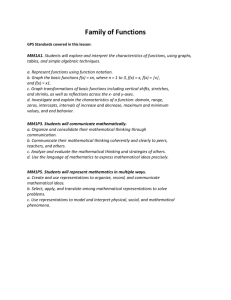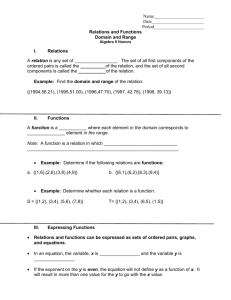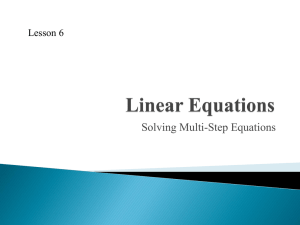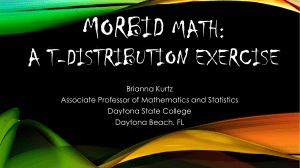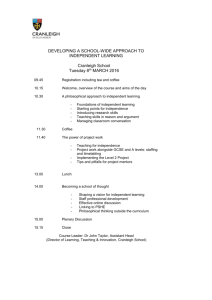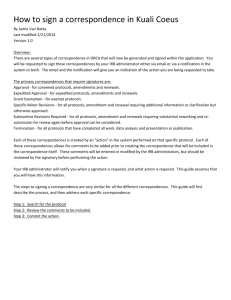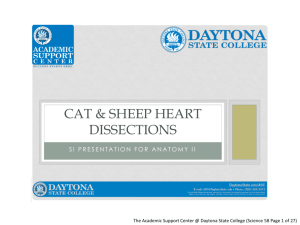3-1: Functions, Domain & Range
advertisement
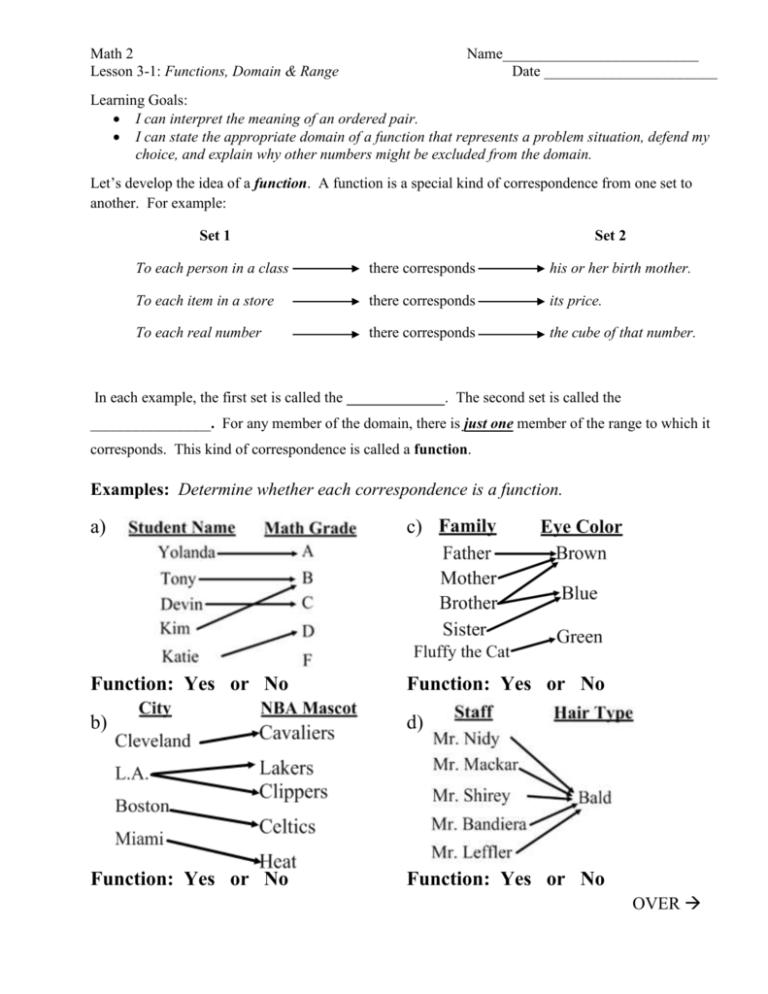
Math 2
Lesson 3-1: Functions, Domain & Range
Name__________________________
Date _______________________
Learning Goals:
I can interpret the meaning of an ordered pair.
I can state the appropriate domain of a function that represents a problem situation, defend my
choice, and explain why other numbers might be excluded from the domain.
Let’s develop the idea of a function. A function is a special kind of correspondence from one set to
another. For example:
Set 1
Set 2
To each person in a class
there corresponds
his or her birth mother.
To each item in a store
there corresponds
its price.
To each real number
there corresponds
the cube of that number.
In each example, the first set is called the _____________. The second set is called the
________________. For any member of the domain, there is just one member of the range to which it
corresponds. This kind of correspondence is called a function.
Examples: Determine whether each correspondence is a function.
a)
c)
Function: Yes or No
Function: Yes or No
b)
d)
Function: Yes or No
Function: Yes or No
OVER
Page 2
Consider the following scenario:
The Daytona 500 is a 500 mile NASCAR Sprint Cup Series motor race that is held annually at the
Dayton International Speedway in Daytona Beach, Florida. The average speed s (t ) (in miles per hour)
for the Daytona 500 race is a function of the time t (in hours) it takes to complete the race with the rule
500
s(t )
.
t
a. What are some reasonable race times for a racer to finish the Daytona 500? Why are these
reasonable?
b. Explain if this scenario seems to represent the idea of a function.
c. What is the average speed for a racer that finishes with a time of 4 hours? 3.5 hours? 3 hours?
Write the solutions in function notation.
d. Listed is a function table of the situation. Explain if this table represents the idea of a
function. Which values represented in this table do not make sense in the problem situation
and why?
t
0
0.5
1
1.5
2
2.5
3
3.5
4
4.5
s(t)
undefined
1000
500
333.3333
250
200
166.6667
142.8571
125
111.1111
e. Shown is a graph of the situation. Explain if the graph represents the idea of a function?
Page 3
Summary of new vocabulary:
Function: A correspondence between a first set, called the ____________, and a second set,
called the _________, such that each member of the domain corresponds to exactly _______
member of the range.
Domain: The domain of a function is the set of all possible ____________ values (usually
_____), which allows the function formula to work.
Range: The range is the set of all possible _________ values (usually _____), which result from
using the function formula.
Practice:
1. Determine whether each correspondence is a function.
Domain
Correspondence
Range
a) A family
Each person’s weight
A set of positive
numbers
b) {-2,0,1,2}
Each number’s square
{0,1,4}
c) the set of all
states
Each state’s members of
the U.S. Senate
A set of U.S. senators
Function?
2. Ms. Heinl buys a coffee on her way to school every day. The cost of her coffee, with tax, is $1.99.
a.
Write a rule using function notation to calculate how much money c(d) Ms. Heinl spends on
her daily coffee for any number of days d.
b.
There were 52 days in the first quarter, how much money did she spend on her coffee?
(assume she was not absent any of those days!)
c.
Ms. Heinl’s dad, Mr. Heinl, gives her a coffee allowance of $400 for the school year. There
are 185 days in Mayfield’s school year. Does her allowance cover the cost of her daily
coffee for the entire school year? Justify your answer.
OVER
3. Examine the following tables to determine which show y as a function of x. For each table that is
not a function, explain why it is not.
a.
x
y
1
3
2
5
3
7
4
9
5
11
6
13
7
15
8
17
9
19
b.
x
y
1
3
2
5
3
7
4
9
5
11
6
9
7
7
8
5
9
3
c.
x
y
9
-3
4
-2
1
-1
0
0
1
1
4
2
9
3
16
4
25
3
d.
x
y
1
3
2
5
3
7
4
9
5
11
4
9
3
7
2
5
1
3
4. If h(t) represents height (in feet above the ground) of a skydiver t seconds into a drop, what do each
of the following statements tell about the diver’s flight?
a. h(0) = 10,000
b. h(25) = 7,500
c. h(10) – h(5) = – 2,500
5. Use the graph (for example, by marking specific points) to illustrate the statements in parts a-d. If
possible, label the coordinates of any points you draw.
a.
f(0) = 2
b. f(-3) = f(3) = f(9) = 0
c. f(2) = g(2)
d. g(x) > f(x) for x > 2

![저기요[jeo-gi-yo] - WordPress.com](http://s2.studylib.net/store/data/005572742_1-676dcc06fe6d6aaa8f3ba5da35df9fe7-300x300.png)

